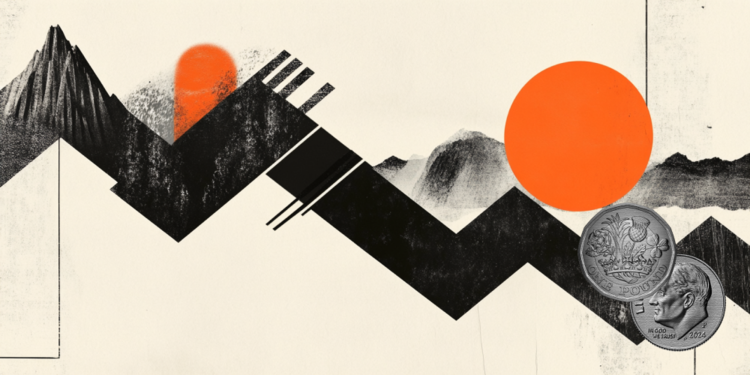Coinbase Lists Keeta (KTA) – Tekedia


Coinbase has officially listed Keeta (KTA), the native token of the Keeta Network blockchain. This follows its addition to Coinbase’s listing roadmap back in early September 2025, alongside Noice (NOICE).
The full listing enables trading on Coinbase’s platform, boosting liquidity and accessibility for users. Coinbase confirmed the listing in a recent update, with trading pairs like KTA/USD now live. Community buzz on X formerly Twitter spiked overnight, with users sharing hype around the event and price potential.
KTA surged approximately 12-17% in the last 24 hours post-listing, reaching around $0.5054 up from recent lows. It’s still trading about 42% below its all-time high of $1.68. 24-hour trading volume hit $13.35M, with a market cap of roughly $186.41M.
You can now buy, sell, and custody KTA directly on Coinbase. It’s also listed on other exchanges like Kraken, MEXC, and NIO.
Register for Tekedia Mini-MBA edition 18 (Sep 15 – Dec 6, 2025): registration continues.
Tekedia AI in Business Masterclass opens registrations.
Join Tekedia Capital Syndicate and co-invest in great global startups.
Register for Tekedia AI Lab: From Technical Design to Deployment.
What is Keeta (KTA)?
Keeta Network is a Layer-1 blockchain designed for high-speed, compliant cross-chain transfers and real-world asset (RWA) tokenization. Up to 11.2 million transactions per second (TPS) via a Directed Acyclic Graph (DAG) combined with Delegated Proof of Stake (dPoS).
Keeta’s Directed Acyclic Graph (DAG) technology is a core component of its Layer-1 blockchain, enabling high-speed, scalable, and efficient transaction processing. Unlike traditional blockchains that rely on linear block structures, Keeta’s DAG offers a unique approach to achieving consensus and handling transactions.

What is DAG in Keeta?
A Directed Acyclic Graph (DAG) is a data structure where transactions are represented as nodes, and edges connections show dependencies between them, forming a graph that flows in one direction without loops (hence “acyclic”).
In Keeta, DAG is combined with a Delegated Proof of Stake (dPoS) consensus mechanism to process transactions in parallel, boosting throughput and reducing latency.

Each transaction in Keeta’s DAG is a node. When a user submits a transaction, it references and validates two or more prior transactions parent nodes in the graph. This creates a web-like structure where transactions are interlinked, unlike a blockchain’s sequential chain of blocks.
Unlike traditional blockchains where miners or validators process transactions in batches (blocks), Keeta’s DAG allows multiple transactions to be confirmed simultaneously. Nodes (users or validators) add their transactions to the graph, and each new transaction helps confirm earlier ones, creating a self-reinforcing network.
Keeta integrates DAG with dPoS, where elected delegates validators maintain the network’s integrity. These delegates are chosen by KTA token holders, ensuring decentralized governance. The DAG structure reduces the computational load on validators, as transactions are validated locally by referencing parent nodes, and delegates finalize consensus.
Transactions gain “weight” as more nodes reference them, increasing their confirmation level. This cumulative validation ensures quick finality often within seconds. Keeta’s design minimizes conflicts by using a weighted scoring system to resolve discrepancies, with delegates stepping in for edge cases.
Keeta claims up to 11.2 million transactions per second (TPS), far surpassing traditional blockchains like Ethereum (15 TPS) or even Solana (65,000 TPS). This is due to parallel processing, where multiple transaction paths can be validated concurrently.
Transactions are confirmed almost instantly, as there’s no need to wait for block creation or long consensus rounds. The DAG grows organically as more transactions are added, avoiding bottlenecks common in linear blockchains during high network demand.
Unlike Proof of Work (PoW) systems, Keeta’s DAG + dPoS combo requires minimal computational resources, making it more environmentally friendly. Keeta’s DAG supports built-in KYC/AML tools, embedding identity certificates into transactions for privacy-preserving compliance, which is critical for its focus on real-world asset (RWA) tokenization and cross-border payments.
The DAG’s speed and scalability make Keeta ideal for its “Outbound Base Anchor” integration with Coinbase’s Base Layer-2, enabling seamless transfers of assets like KTA, USDC, EURC, and cbBTC. The high TPS and compliance features support tokenizing real-world assets with fast, auditable transactions.
The low-cost, high-speed structure suits DeFi applications and cross-border remittances, competing with networks like Ripple (XRP). DAGs are harder to implement and secure than traditional blockchains, requiring robust algorithms to prevent attacks (e.g., “parasite chain” attacks where malicious nodes create invalid transaction paths).
The dPoS component relies on elected delegates, which could introduce centralization if token distribution is uneven. While technically impressive, Keeta’s success depends on ecosystem growth and developer adoption, which is still nascent compared to Ethereum or Solana.
Keeta’s edge lies in its ultra-high TPS and compliance focus, tailored for institutional use cases, though it faces competition from established players like Hedera. Keeta’s DAG technology enables it to process transactions at unprecedented speeds while maintaining compliance, positioning it as a strong contender in regulated DeFi, cross-border payments, and RWA markets.
The recent Coinbase listing amplifies its visibility, potentially driving adoption. However, investors should watch for network stability and governance developments, given the insider-heavy token allocation.
Built-in KYC/AML tools, including identity certificates for privacy-preserving verification, making it appealing for institutions. Recent activation of an “Outbound Base Anchor” for seamless transfers with Coinbase’s Base Layer-2 network supporting KTA, USDC, EURC, and cbBTC.
Total supply emphasizes long-term utility, with 50% allocated to insiders though this has raised some governance flags. Mining rewards continue until 2139. The listing validates Keeta’s push into regulated markets like cross-border payments and DeFi, potentially driving wider adoption.
Analysts note strong whale accumulation 76.7M KTA held and smart money inflows +23% since July, but volatility remains high—especially with an unclaimed airdrop affecting ~60% of eligible wallets.





